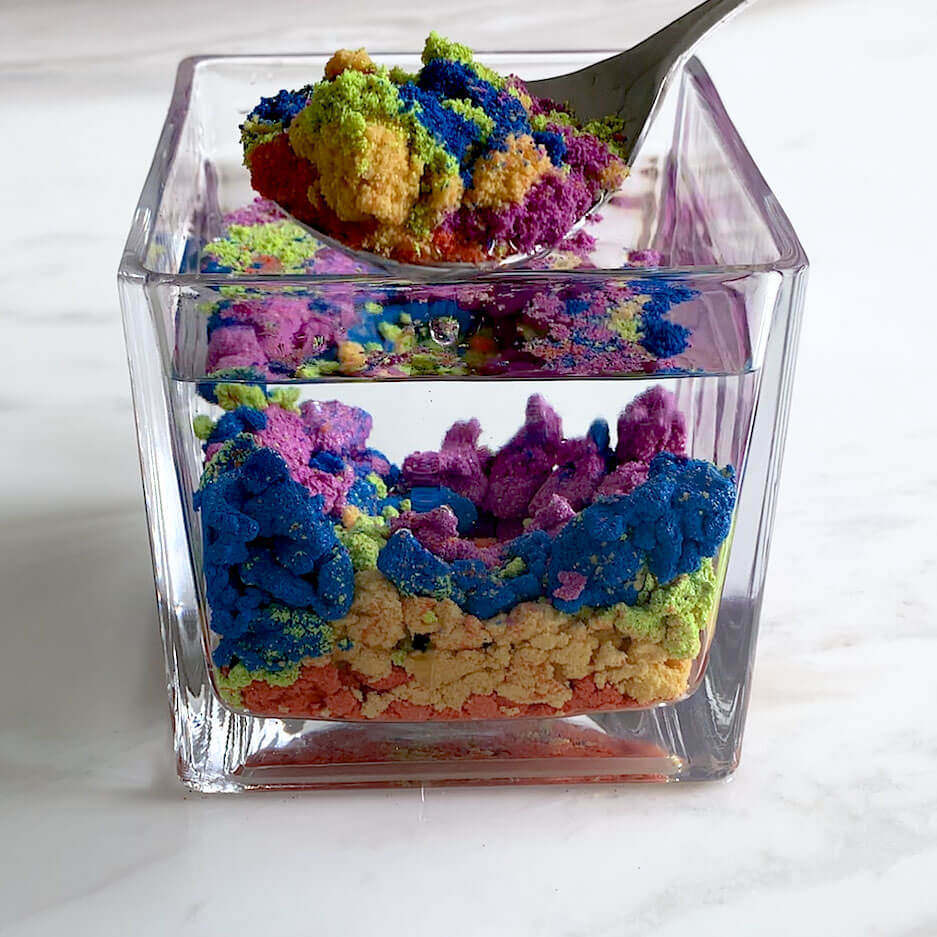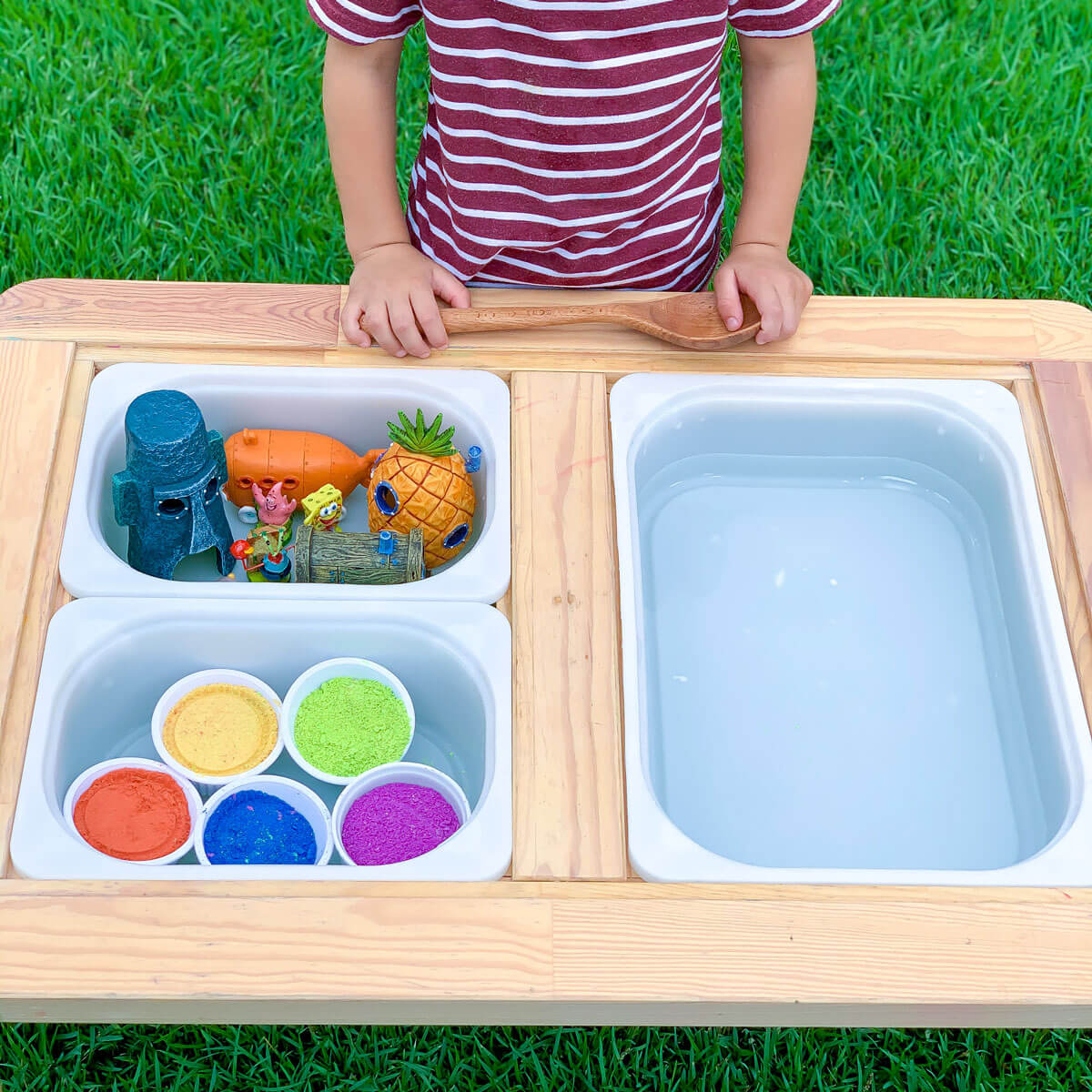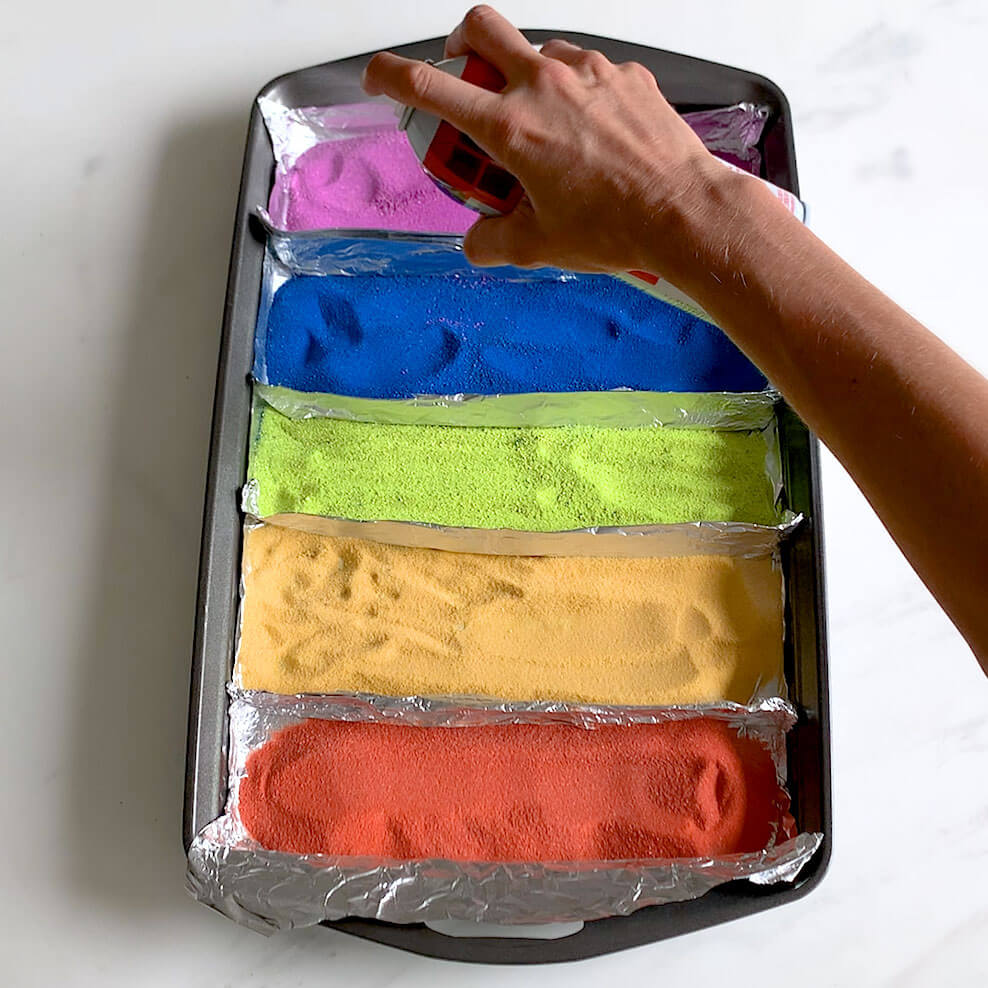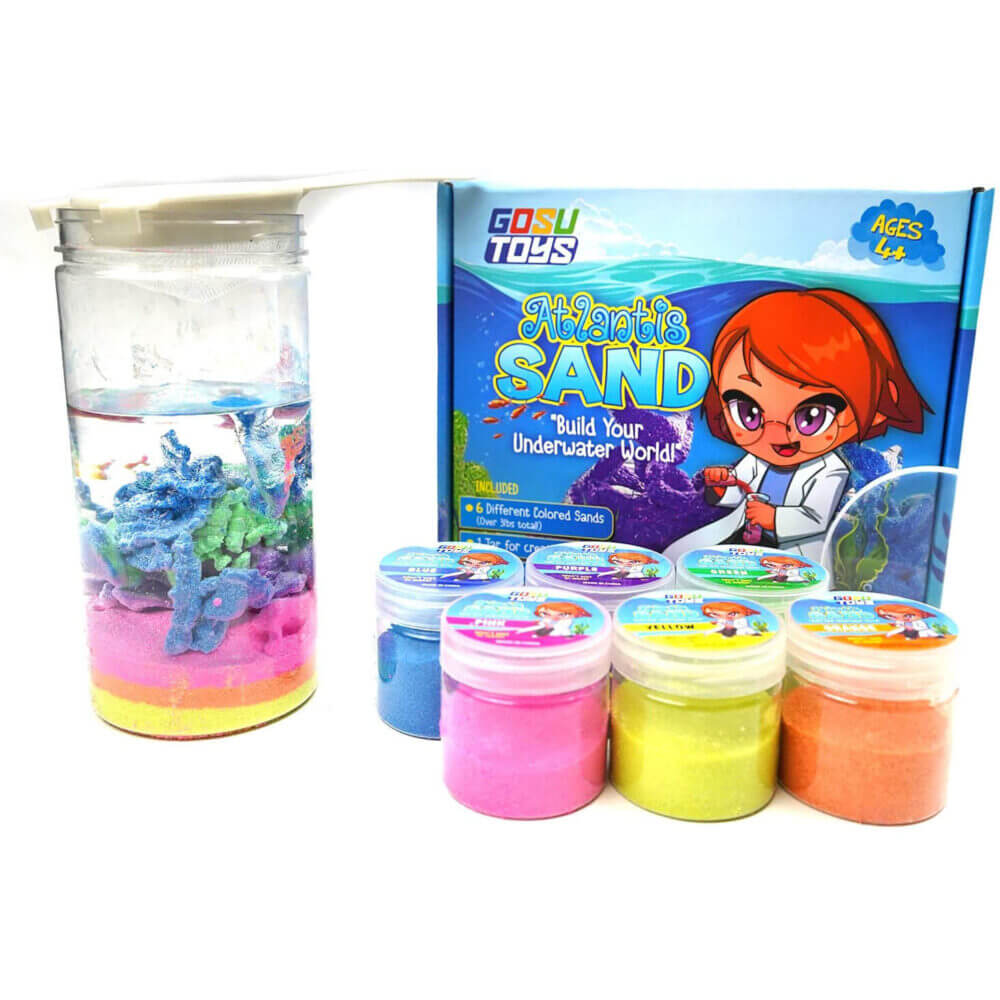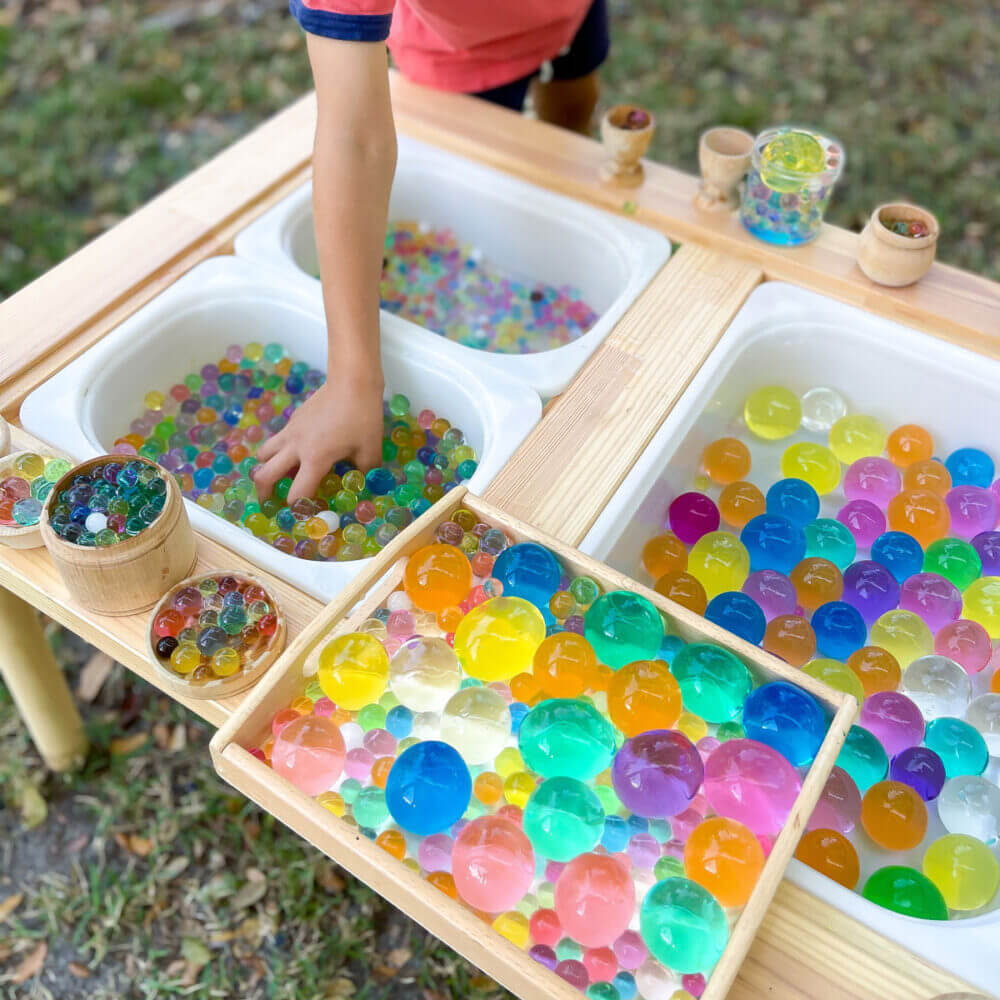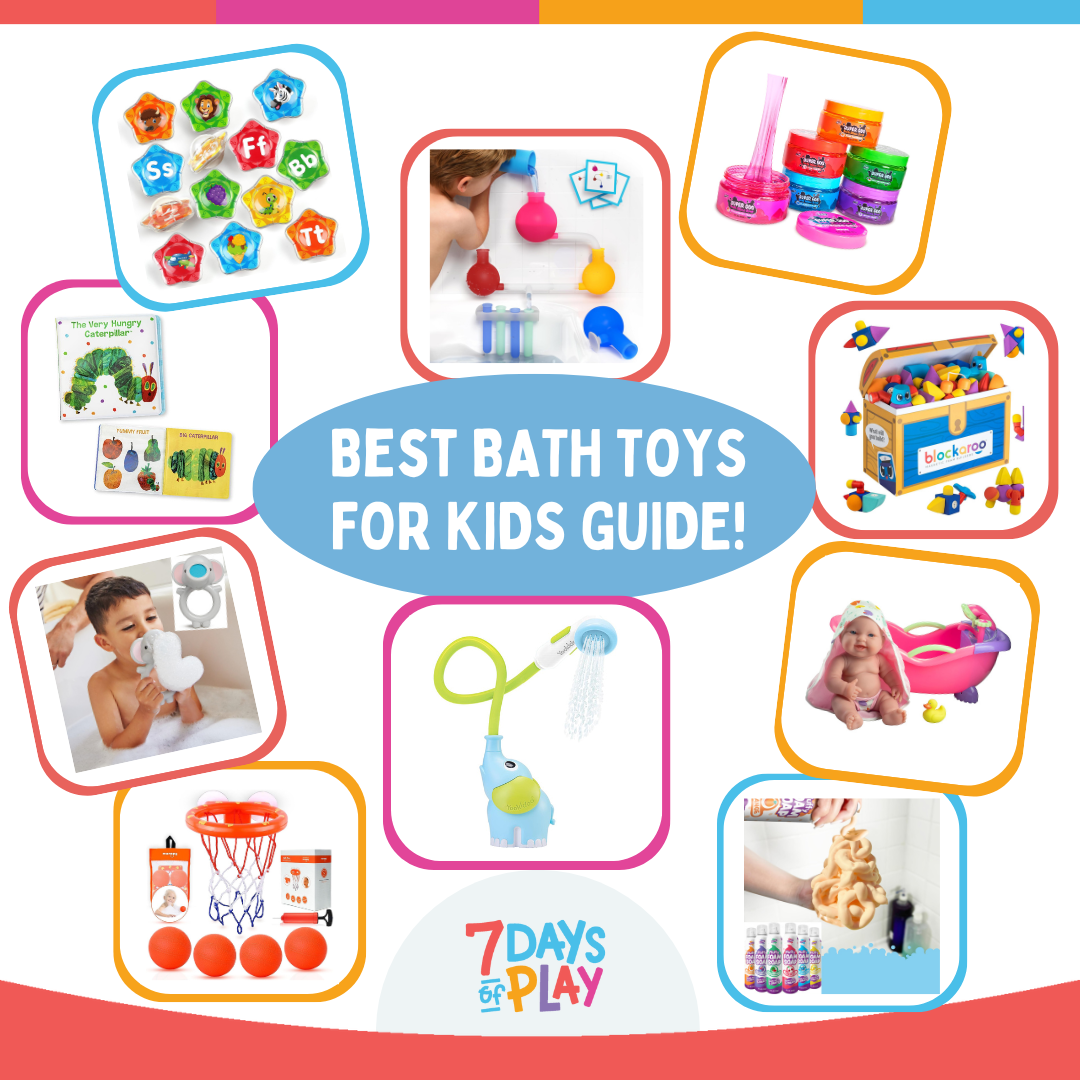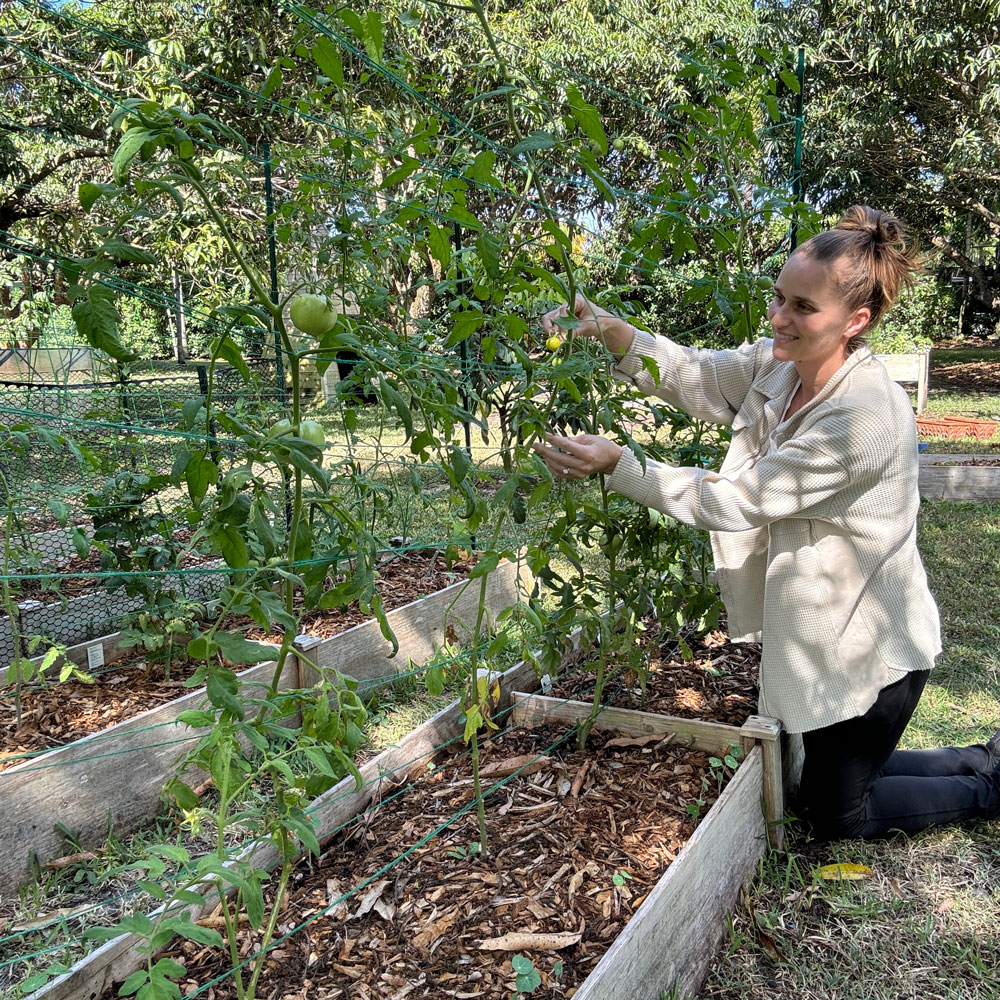Hydrophobic Sand – How to Make Magic Sand
Hydrophobic sand, also known as Magic Sand, is sand that doesn’t get wet! The kids are going to be obsessed with this Magic Sand! It’s literally sand that just doesn’t get wet! Just when you thought that it sand couldn’t get any better, along comes this simple sensory activity that is going to have the kids thinking that you have a bunch of magic tricks hiding up your sleeves! Keep on reading to find out how to make this fun science-based activity for kids!
What is Hydrophobic Sand?
If something is hydrophobic it means it repeals water and cannot be mixed with it. For example, oil is hydrophobic and so are some leaves. Sand is not normally hydrophobic. Rather, when it comes in contact with water, dry sand will become wet and moldable – after all, that’s the beauty of building sand castles! This recipe adds a water-repellant to the sand making it hydrophobic so that when it is immersed in water you can take it out and it will still be perfectly dry, like magic!
Watch How to Make Hydrophobic Sand
The kids just might not believe you right away when you tell them that this sand is water-resistant. How in the world can there be sand that doesn’t absorb water and instantly become a sticky and messy mess?
Making Magic Sand is super easy, it just requires 2 supplies, including the sand. Since it involves using a lot of water-proof spray I recommend that the grown ups are the ones who make this and the kids can enjoy the magic once it’s done!
Watch How to Make Hydrophobic Sand
The kids just might not believe you right away when you tell them that this sand is water-resistant. How in the world can there be sand that doesn’t absorb water and instantly become a sticky and messy mess?
Making Magic Sand is super easy, it just requires 2 supplies, including the sand. Since it involves using a lot of water-proof spray I recommend that the grown ups are the ones who make this and the kids can enjoy the magic once it’s done!
Setting Up a Hydrophobic Sand Activity
This activity is so adaptable! I included Sponge Bob Squarepants figurines in our set up, but feel free to switch that up, or simply focus on the hydrophobic sand by itself.
This is a great opportunity to showcase the science of a something being hydrophobic. You could have one cup of Magic Sand and one cup that has not been made into Magic Sand and have your kiddo compare the results of when each sand comes in contact with water.
I used pre-colored sand for this to save some time, but you don’t even need any color at all to enjoy the magic of hydrophobic sand. However, whether you used colored sand or not, make sure you use a sand that is coarse. The finer the sand, the hard it will to be to apply the water-proof spray.
All activities should be supervised by an adult. As an Amazon Associate, I earn from qualifying purchases. This post may contain affiliate links.
Materials
- Sand (the coarser the better!)
- Water-proof spray
- Baking pan
- Aluminum foil
- Tape (optional)
- Sand (the coarser the better!)
- Water-proof spray
- Baking pan
- Aluminum foil
- Tape (optional)
Step-by-Step Instructions
Step 1
On a baking pan lined with aluminum foil, spread out a thin layer of sand. If you are making multiple colors, you may want to separate them with a taped foil partition as pictured in the video! That way, the colors are less likely to mix (and you save yourself multiple pans to clean!)
Step 2
Spray the sand with water-proof spray (to be performed by an adult!)
Step 3
Let the sand dry for about 10-15 minutes.
For best results, repeat steps 2 and 3 at least a few times. We did it three times.
Allow the sand to dry. Since our layer was on the thicker side, we let it dry overnight.
Step 1
On a baking pan lined with aluminum foil, spread out a thin layer of sand. If you are making multiple colors, you may want to separate them with a taped foil partition as pictured in the video! That way, the colors are less likely to mix (and you save yourself multiple pans to clean!)
Step 2
Spray the sand with water-proof spray (to be performed by an adult!)
Step 3
Let the sand dry for about 10-15 minutes. For best results, repeat steps 2 and 3 at least a few times. We did it three times.
Allow the sand to dry. Since our layer was on the thicker side, we let it dry overnight.
Tips for Making Hydrophobic Sand
Sand Type. Make sure it is not too fine. The goal when applying the water-resistant spray is to cover the grain of sand entirely. So the coarser the sand, the easier it will be to cover without having to apply the spray a million times!
Thin Layer. Keep the layer of sand you are spraying thin. The deeper the batch you are working with, the longer it will take for the spray to dry to make the sand hydrophobic!
For more sensory play or science-based activities visit our comprehensive lists!
Tips for Making Hydrophobic Sand
Sand Type. Make sure it is not too fine. The goal when applying the water-resistant spray is to cover the grain of sand entirely. So the coarser the sand, the easier it will be to cover without having to apply the spray a million times!
Thin Layer. Keep the layer of sand you are spraying thin. The deeper the batch you are working with, the longer it will take for the spray to dry to make the sand hydrophobic!
For more sensory play or science-based activities visit our comprehensive lists!
More Sensory Bases to Explore
Here are my top picks for sensory activities that kids will love!
Hydrophobic Sand Kit
If you want to do this activity, but are short on time, this hydrophobic sand kit is for you! It comes with 6 colors, a jar, and a small mesh strainer!
Sensory Sand
Sensory sand is moldable! This bulk pack comes with enough to fill an entire bin for lasting fun! Bonus points for including a storage bin!
Modelling Dough
This modelling dough compound NEVER dries out! It is a fun texture – it is stretchy like play dough, moldable like kinetic sand, and odorless.
What’s Next?
The Best Bath Toys for Kids in 2024
Explore the best bath toys for kids! Discover the ultimate guide to bath time fun with these top picks that will make every splash memorable.
How to Layer a Raised Garden Bed and Make a Trellis
Learn how to layer a raised bed and create affordable trellises for thriving gardens. Explore our guide for expert tips & easy instructions!
Number Recognition for Toddlers – The Best Activity to Start Learning
Kickstart number recognition for toddlers with this beginner’s activity! Fill bubble outlines with pom poms for engaging hands-on learning.

